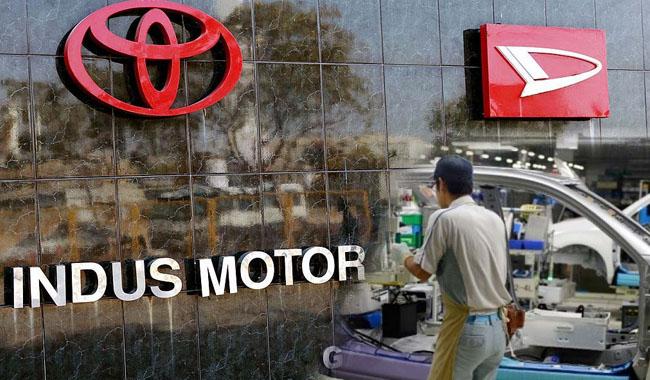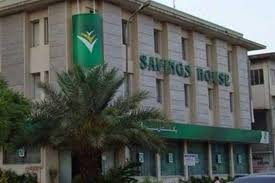It seems like the slump in the auto sector is coming around.
To an extent.
The latest results from Indus Motors show that the downward trend in its sales has finally turned for the better and the company has shown good performance for the first quarter of FY 2025. The car company saw growth in both its sedan classes and its Sports Utility Vehicle (SUVs) Segment in the last two years. Sedan sales increased by 40% from 3,236 at the end of September 2023 to 4,554 at September end 2024 while SUVs saw a growth in sales of 26% from 1,275 to 1,606 for the same period. This has led to the company seeing a growth in its profits as well. The news comes on the back of the recent revival of auto lending which has been seeing a downward trend for 27 consecutive months due to record high interest rates. As interest rates have declined by almost 450 basis points from 22%, the auto lending sector saw revived demand.
The results of the company show that the company has increased its revenues by 27.3% from Rs 32 billion last year for the same quarter to Rs 41.6 billion this year. The company saw record high revenues of Rs 275 billion on the back of 75,611 units that it sold in 2022. Last year the company recorded its worst year in terms of sales as it was only able to sell 21,063. The recent results point towards the fact that the company will see better end-of-year figures as well as better results by June of 2025.
The company was able to earn better gross profits which increased by almost 70% from Rs 3.3 billion to Rs 5.6 billion. This was down to better cost management as the company was able to increase revenues by 27% while its costs only increased by 22.6% for the same period. The company did see an increase in its selling and distribution expenses which almost doubled from Rs 38 crores to Rs 66 crores this quarter while administrative costs were similar. The company also saw an increase in other operating expenses which meant operating profits increased from Rs 2.2 billion to Rs 3.9 billion.
Indus Motors has continually looked to address its finance costs which have increased in recent years. It has done so by investing in fixed-income assets which have seen a growing investment trend in recent years. Due to excess cash and liquidity at hand, the company has looked to invest these funds into income-generating assets which have supplemented much of the income being generated by the company. In 2009, the company saw Rs 72 crores in other income which have steadily grown to Rs 13 billion by 2024.
The company made a decision in 2022 that it was looking to increase localization and set up a hybrid plant in the country. In order to make this possible, the company chose to invest in its fixed assets while it used much of its excess liquidity to pay off its current liabilities. The company saw its liabilities go from Rs 160 billion to Rs 62 billion in 2023. Simultaneously, there was also a decision made to invest excess funds into income-generating assets which increased other income 13 times from where they stood at in 2009. Due to other income, the company saw net profits of Rs 5 billion this quarter where they stood at Rs 3.2 billion last year for the same period. Other income generated from non operation activities stood at Rs 4.5 billion this quarter which were Rs 2.8 billion last year. If these two amounts are taken away, the company would have seen Rs 63 crores of profit this quarter and Rs 39 crores in the last quarter.
To put the performance of the company in context, the company has shown that it has earned Rs 64.77 per share this quarter in terms of its profits which was Rs 40.91 last quarter. If the other income element is taken away, the company would lose Rs 56.7 per share for this quarter leaving behind Rs 8.07 per share in terms of operations that the company controls itself. The same can be done for last year where the company would lose Rs 35.89 per share leaving behind only Rs 5 per share in terms of operational profits of the company.
The recent results show that the company is seeing an increase in its sales which is a positive sign for the company and the industry. The increase in net revenue of the company is down to the efforts of the management itself and the cost savings are also leading to better gross profits. However, relying on the growth in earnings per share can be a little misleading as it hides the fact that the company is earning most of its profits from means and sources outside the company itself. The company has made some astute investments in the past which are reaping profits and returns for the company this year as well. There are signs of recovery and this recovery and revival needs to be built upon before the management at Indus can be credited.
There are additional aspects that also need to be considered which have taken place in recent days which put another asterisk next to the performance of the company. On the day the results were announced, the company also announced that they would be carrying out a plant shutdown. This is due to low demand that the company has been seeing in recent years. In 2024, the company only produced 19,599 units while it had a capacity to produce 66,000 units on an annual basis. Due to low demand, the company finds it economically feasible to shut down in order to limit costs rather than increase the losses it is making. The shutdowns are also a legacy of the import restriction that was placed on the industry. Most of the car manufacturers in the country are assemblers meaning they import the parts and then assemble them locally. The import ban meant that parts could not be imported which meant it was better to shut down production as the parts were not available. In the recent disclosure as well, the company announced to the exchange that it was seeing a shortage of parts due to which they were not able to meet production requirements causing them to shut down for 3 days.
It can be said that there are signs that the auto sector is seeing signs of recovery with auto sales increasing in recent years. Any definitive statement in regards to Indus Motors will have to wait for at least the next few quarters. In 2024, the company was able to sustain profits by increasing their profit margins and showing better returns. The first quarter has shown that demand is picking up as well. However, any performance improvement in the company has to take into account the fact that most of its profits are from other sources. The company needs to get back to 2022 levels where most of its profits were being generated by its own operations.
























